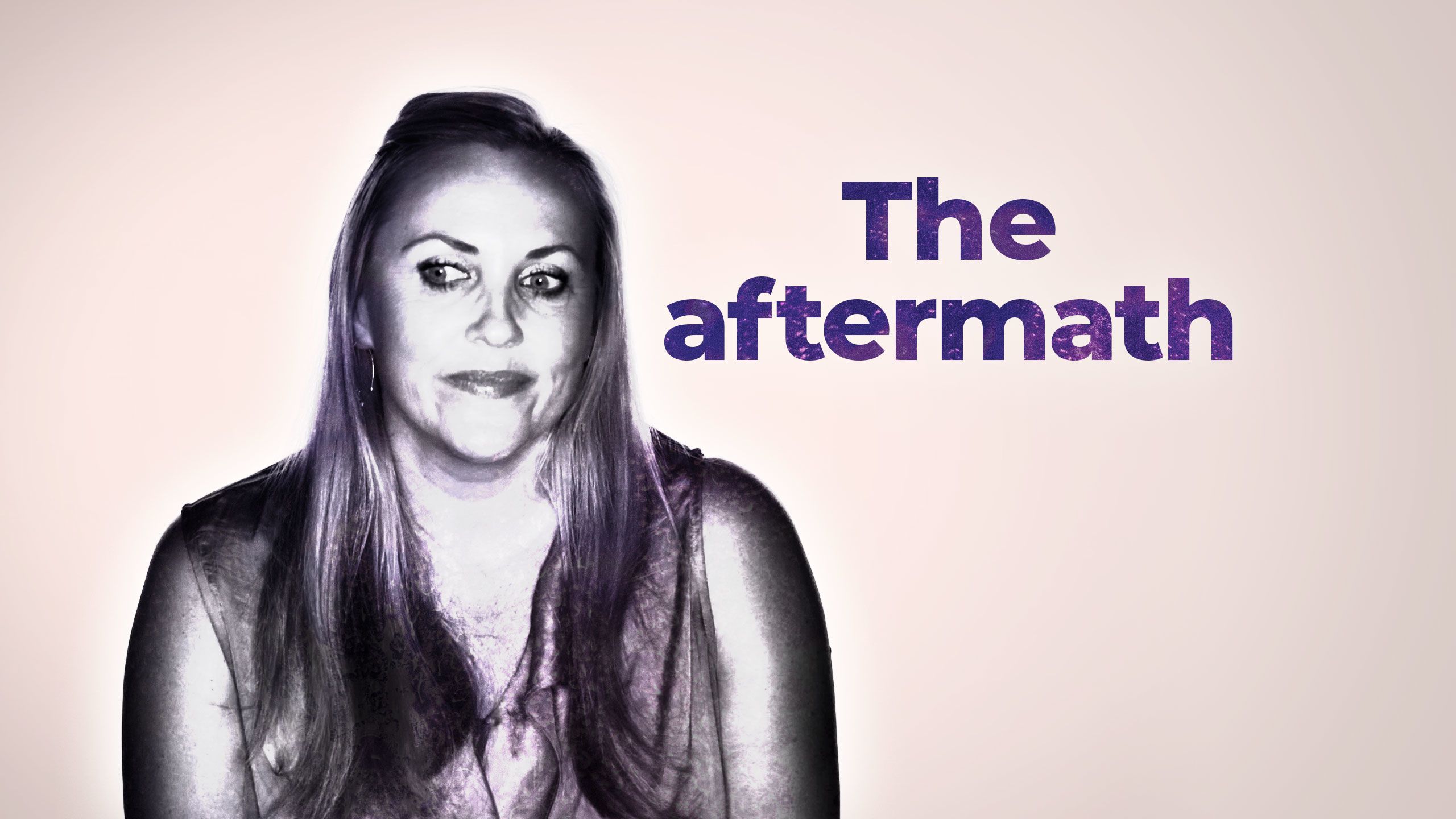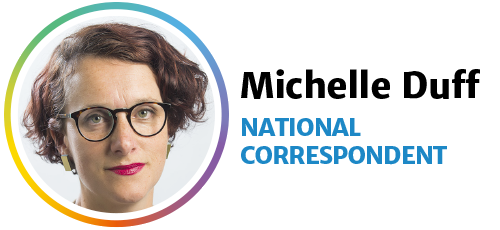
It’s been more than a year since the global Me Too movement exploded into public consciousness, with women sharing stories of sexual harassment and assault.
In New Zealand, Stuff has driven a national conversation about the issue since launching the #metooNZ project - the biggest and most comprehensive investigation into sexual harassment in New Zealand - in February 2018.
We have logged hundreds of hours investigating survivors’ stories, and published dozens of articles uncovering both individual perpetrators and systemic failures.
But what has actually changed? More than a year on from Me Too, why are New Zealanders still waiting for a meaningful, co-ordinated, national response?
We asked government ministers to provide us with concrete examples of what they or their ministries had done to measure the issue of workplace sexual misconduct, or tackle it.
The answer was: nothing much.
Many survivors of sexual harassment are surprised to find they’re still trying to cope with the fall-out years later - after they've left their job, struggled to maintain relationships, even moved towns. An actor voices Sarah’s* story.
Many survivors of sexual harassment are surprised to find they’re still trying to cope with the fall-out years later - after they've left their job, struggled to maintain relationships, even moved towns. An actor voices Sarah’s* story.
What needs to change?
The only measurable change has been for the Ministry of Business, Innovation and Employment to start keeping records of sexual harassment complaints, as directed by Minister for Women Julie Anne Genter. Previously, they were counted with all other complaints.
Minister for Workplace Relations Iain-Lees Galloway pointed to a web page of resources WorkSafe had developed to help people write sexual harassment policies.
Green MP and Under-Secretary for Justice Jan Logie said the time for an inquiry had passed, as sexual harassment was an issue “everyone understands is real”. A new strategy to tackle family and sexual violence was currently under development, and a comprehensive work plan to address sexual harassment would form part of this. The State Services Commission and WorkSafe were also involved.
Justice Minister Andrew Little did not respond.

Jan Logie, second from the right, at the launch of the “Don’t guess the YES” campaign.
Jan Logie, second from the right, at the launch of the “Don’t guess the YES” campaign.
But those spoken to by #metooNZ say quantifying the problem has to be part of the solution. “The government’s moves [don’t] take us far enough,” says Kathryn McPhillips, Rape Prevention Education director. “We also need ways to track and hold accountable those who are causing harm, and appropriate ways to support those who protest the harassment being done to them.”
The Human Rights Commission (HRC) has been pushing the government to create a nationwide sexual harassment strategy, and a centralised agency to investigate complaints and provide victim support. Former Equal Employment Opportunities Commissioner Jackie Blue, who left the office late last year, has also said there needs to be a national inquiry.
As yet, the HRC has not been empowered to act. In contrast, the Australian Human Rights Commission was part-funded by its government to conduct a year-long national inquiry into sexual harassment and its effects on work and the economy in June 2018. Potential outcomes include a national framework to eradicate sexual harassment.
Last year it held a national telephone survey on sexual harassment, polling more than 10,000 Australians. It found one in three people have experienced sexual harassment at work in the past five years.
Blue told Stuff the progress is inadequate despite the changes to MBIE’s data collection systems. These have captured 63 complaints since July 2018.
“The numbers are low and no one would seriously accept this is the real picture,” she says.

The fact is we do not know the true extent of sexual harassment in our workplaces. We need to urgently prioritise a workplace survey to understand the extent of sexual harassment in the workplace.
McPhillips agrees. “They would also do well to ... commit to public reporting.”
Other experts spoken to by Stuff pointed to even earlier interventions that could make a difference, including comprehensive sex education in secondary schools. An Education Review Office report last year found students are being let down at school by a lack of education around consent, pornography and sexual violence, and that this hasn’t changed in a decade.
More help for victims to get back into the workplace would also help. Massey University school of management lecturer Kate Blackwood has found workplace harassment and bullying typically result in lower productivity and commitment levels from the victim, absenteeism, anxiety, depression and low morale.
But mental trauma resulting from sexual harassment - including post-traumatic stress disorder, anxiety and depression - is not covered by ACC. It does pay out for mental trauma from sexual assault; in the past 10 years, this has cost $636 million. (This figure did not separate out work and non work-related claims.) In June, Logie’s office said she had been holding “informal discussions” to extend this cover to sexual harassment.
Rays of hope
Individual organisations are beginning to recognise the importance of women feeling safe in the workplace, and are pushing for gender equality.
Frances Joychild QC has worked in employment law for decades and wrote one of the most thorough and damning reports into sexual harassment in a public organisation. The Joychild report, released last year, examined decades of sexual harm in the New Zealand Defence Force and led to promises of change.
Joychild says a cultural shift has already happened in her lifetime, but it hasn’t yet gone far enough.

When I grew up they used to say she was raped but not injured. Now we know that the injuries are far more lifelong than a physical beating. We now know the invasion of your body is just huge.
She would like to see more support for victims of sexual violence, and a change to the way courts operate to address the low conviction rates for sexual offending. “There are still all these rape myths circulating in society.”
Activists are achieving change too. Legal researcher Zoë Lawton launched an anonymous blog that uncovered hundreds of stories of harassment in New Zealand’s legal profession. She says all the current reporting methods share one fatal flaw - isolation.

You go to your employer, it’s by yourself, you go to police, the Human Rights Commission, it’s by yourself.
“It’s understandable people don’t want to do that. It’s terrifying.”
Lawton says her research shows victims are more likely to feel comfortable coming forward if others have too. In 2018, she teamed up with the UK creator of Vault, a software-based reporting system where employees can log a complaint securely, and decide whether to make a complaint straight away, or only when another complaint about the same person is made. Vault and similar systems use block chain technology, where small units of information are stored across a large network of computer servers rather than a single one, making it virtually impossible for hackers to compromise the data.
Lawton thinks these kinds of systems are also better from the organisation’s point of view.
“It’s great for employers, because it’s their nightmare scenario having to conduct an investigation where it’s one person’s word against another’s. But if there’s five people saying this person did this to me, and it’s all similar behaviour, that’s perfect for them.”
Lawton says data from WorkSafe and the Human Rights Commission, both of which also take reports of sexual harassment, needs to be joined up - and a national inquiry is well overdue.
“I think some people have the false perception that the harassment women are experiencing isn’t that common or serious and the Me Too movement is an overreaction.
“An inquiry will show the true extent of the issue and get the doubters to take it seriously. We need everyone onboard.”
For others, life goes on
Many of the survivors we have met, like Sarah* (played by an actor in the above video) are recovering from their experiences, but find the repercussions of sexual violence can linger throughout their lives.
Sarah still grapples with anxiety, depression and post-traumatic stress disorder years after she was allegedly raped by her co-worker.
Others we have spoken to say it took years to allow anyone apart from immediate family members to touch them at all. Many reported changing everything about their appearance, wearing baggy clothes, gaining weight and not wearing makeup so as not to attract attention.
The human cost of sexual harassment remains unmeasured. For those we have spoken to, it is immeasurable.
One year on, our work is not yet done. It’s already shown us sexual harassment is pervasive and corrosive in New Zealand workplaces - but it does not have to be inevitable. It is not something we, as a society, are powerless to change.
Listening to survivors, and amplifying their voices, has already made a difference. It’s time for everyone who has the opportunity to shape the culture of our workplaces, to say of workplace harassment: I’ve had enough.
* Name changed
WANT TO SEEK HELP? Access advice on how to contact police or other support services.

Journalists: Alison Mau, Michelle Duff and Cecile Meier
Video Producer/Director: Jo Raj
Videographer: Phil Johnson
Designer/Developer: Kathryn George
Editor: John Hartevelt





